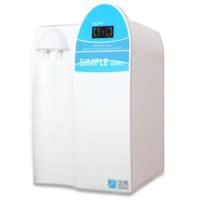Nitrite Determination by Colorimetric and Fluorometric Griess Diazotization Assays: Simple, Reliable High-Throughput Indices of Reactive Nitrogen Spec
互联网
624
Reactive nitrogen species (RNS) are generated as part of inflammatory reactions, mostly as a consequence of inducible nitric oxide synthase (iNOS) (reviewed in refs. 1 –3 ). Typically, nitric oxide (•NO) is produced by macrophage-type cells or, in the central nervous system (CNS), by reactive microglia. The iNOS enzyme catalyzes the oxidative conversion of arginine to citrulline, plus •NO free radical. Normally, iNOS activity is high and sustained irrespective of cytosolic Ca2+ levels. This contrasts sharply with the activity of constitutively expressed forms of nitric oxide synthase (NOS), such as neuronal NOS (nNOS) or endothelial NOS (eNOS), which normally generate only small bursts of •NO in response to transient Ca2+ currents (2 ). Under some circumstances, constitutive forms of NOS may generate profligate quantities of •NO. For instance, eNOS can be phosphorylated by a protein kinase B (AKT)-dependent pathway, after which the phosphorylated enzyme loses Ca2+ dependence and becomes a copious producer of RNS (4 –5 ). •NO per se is a vasodilator and neurotransmitter, but likely not a major toxin. The •NO free radical is relatively unstable in the biological milieu, reacting via complex pathways to yield secary and tertiary RNS, such as peroxynitrite (ONOO− ) and •NO2 free radical. These products may be much more deleterious than the original •NO radical (reviewed in ref. 1 ).








